NEW Synology Data Protection models and ActiveProtect Manager
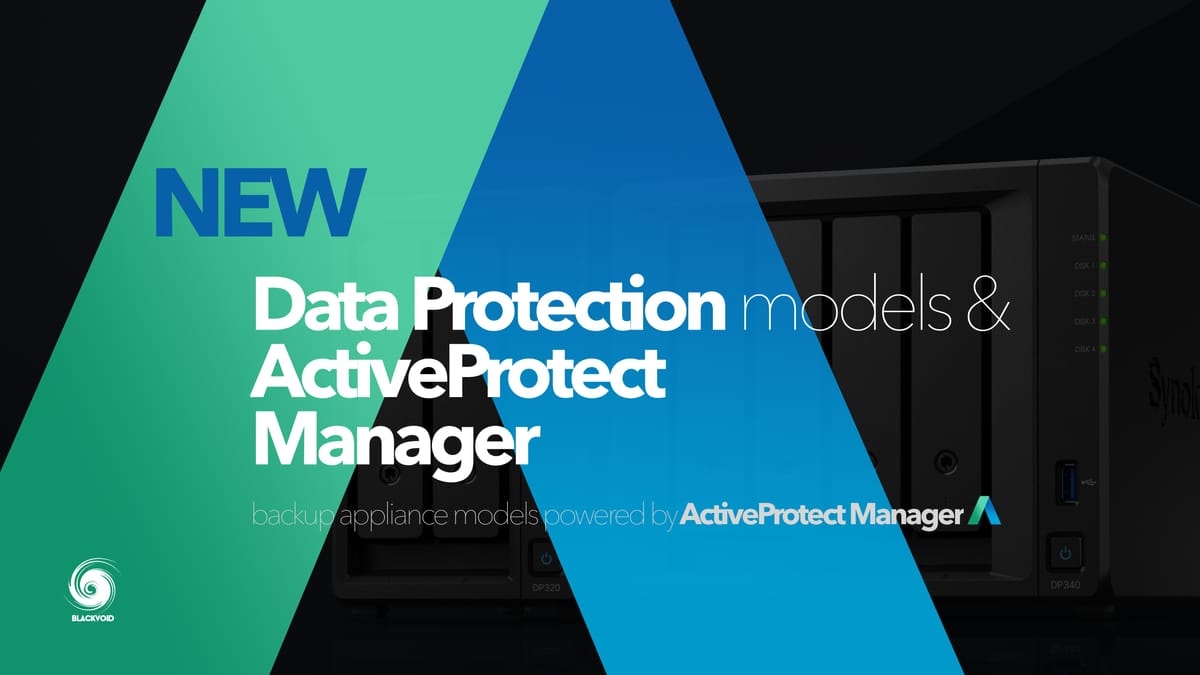
Following the latest reveal during this year's Computex expo in Taiwan, Synology has presented several new upcoming products as well as new platforms and services.
One of the biggest news was the introduction of another new product line in 2024 (following the BeeStation rollout earlier this year), the DataProtection. DP for short, these rack models will be a separate line of products on top of Synology's existing DS and RS units.
Advertised as pure backup appliance units, the DP devices are exactly that in every way. Prepopulated with an HAT3300 series drive, and upgraded with more RAM, as well as a familiar CPU architecture that we can find in their NAS lineup.
Synology will surely expand on this lineup of devices by looking at the new naming that follows the DP units. Unlike the current DS and RS devices that just by name can be identified if those are desktop or rack models, the new DP series will keep all models under one umbrella.
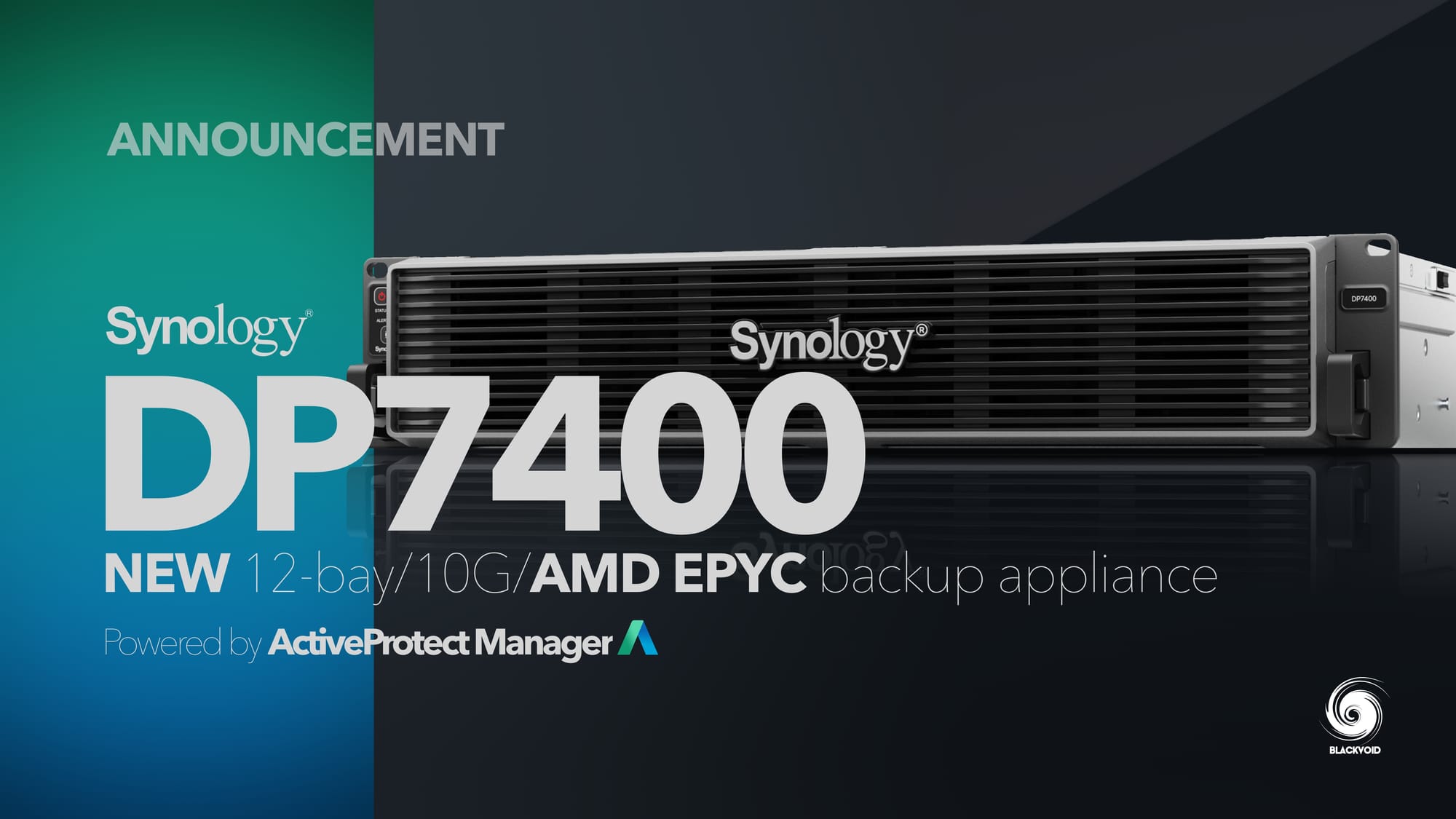
Because of this, Synology has decided to abandon the usual naming convention that follows almost all of its current lineups and go fresh with a different nomenclature for both desktop and rack DP models.
Pre-configure hardware for backup purpose with dedicated operation
system for backup, recovery, instant restore, replication, and deduplication.
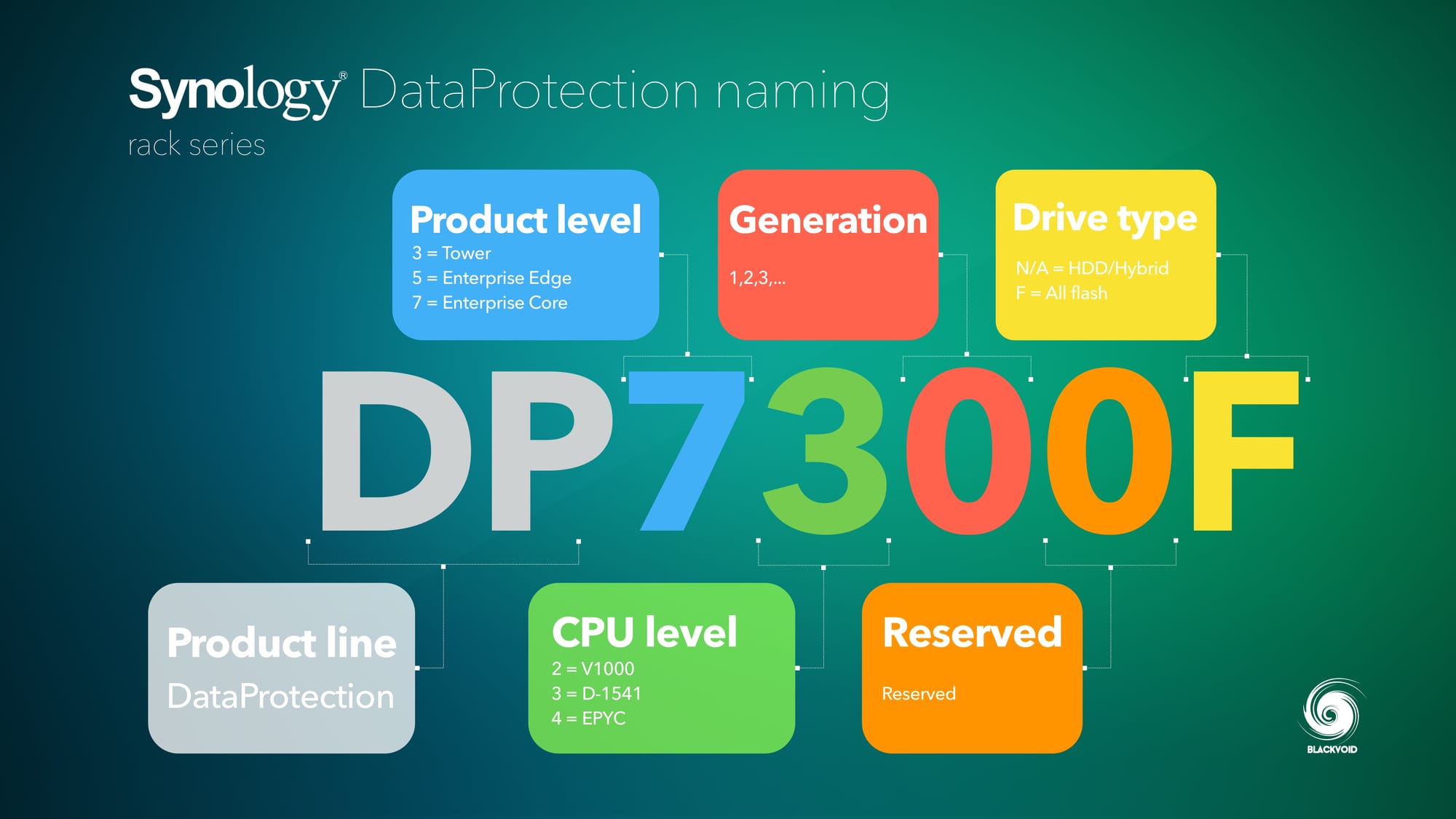
Just from the CPU and product level, we can see that there will be several combinations and models that will emerge from this series with both AMD and Intel-powered CPUs. The drive type suffix also indicates the option of HDD and all-flash combinations, so there will be something for everyone.
Storage configurations are automatically set based on each model. (RAID, SSD cache, hot spare, etc.)
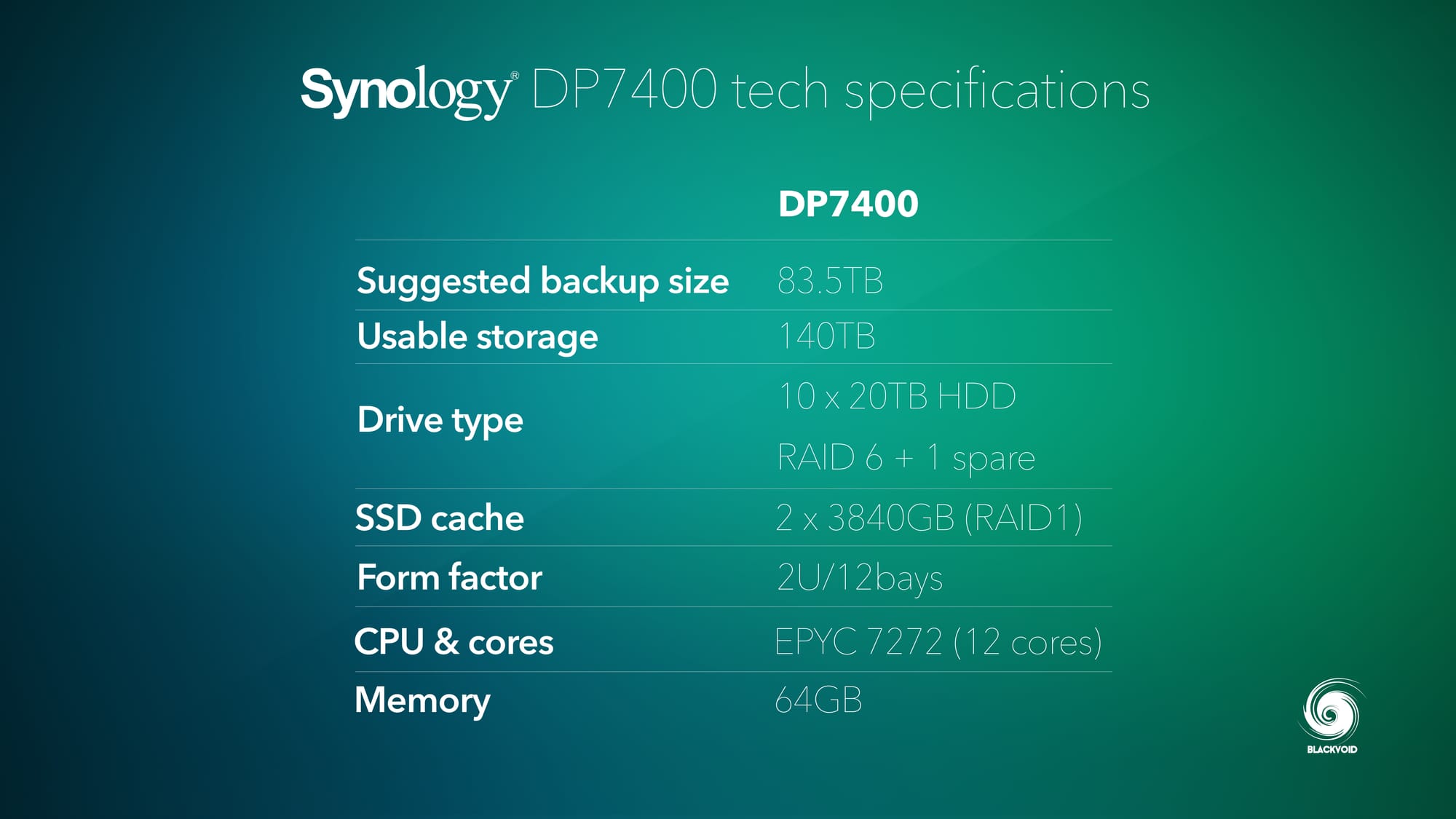
As already said, these appliances are specifically designed for backup, so their configuration and sizing are designed for stable performance and reliability.
One nice feature is that for example, DP7400 comes with a dual 10G network adapter out-of-the-box, and a separate management port, a setup that is also new for Synology models.

DP devices will also have a very unique feature in terms of their configuration. Depending on the setup, the storage configurations will be automatically set for each model. So, RAID, SSD cache, hot spare, and more will be configured automatically to utilize the entire appliance as best as possible. So, it looks like that even from a software side, this will be a real-turn key solution.
: ActiveProtect
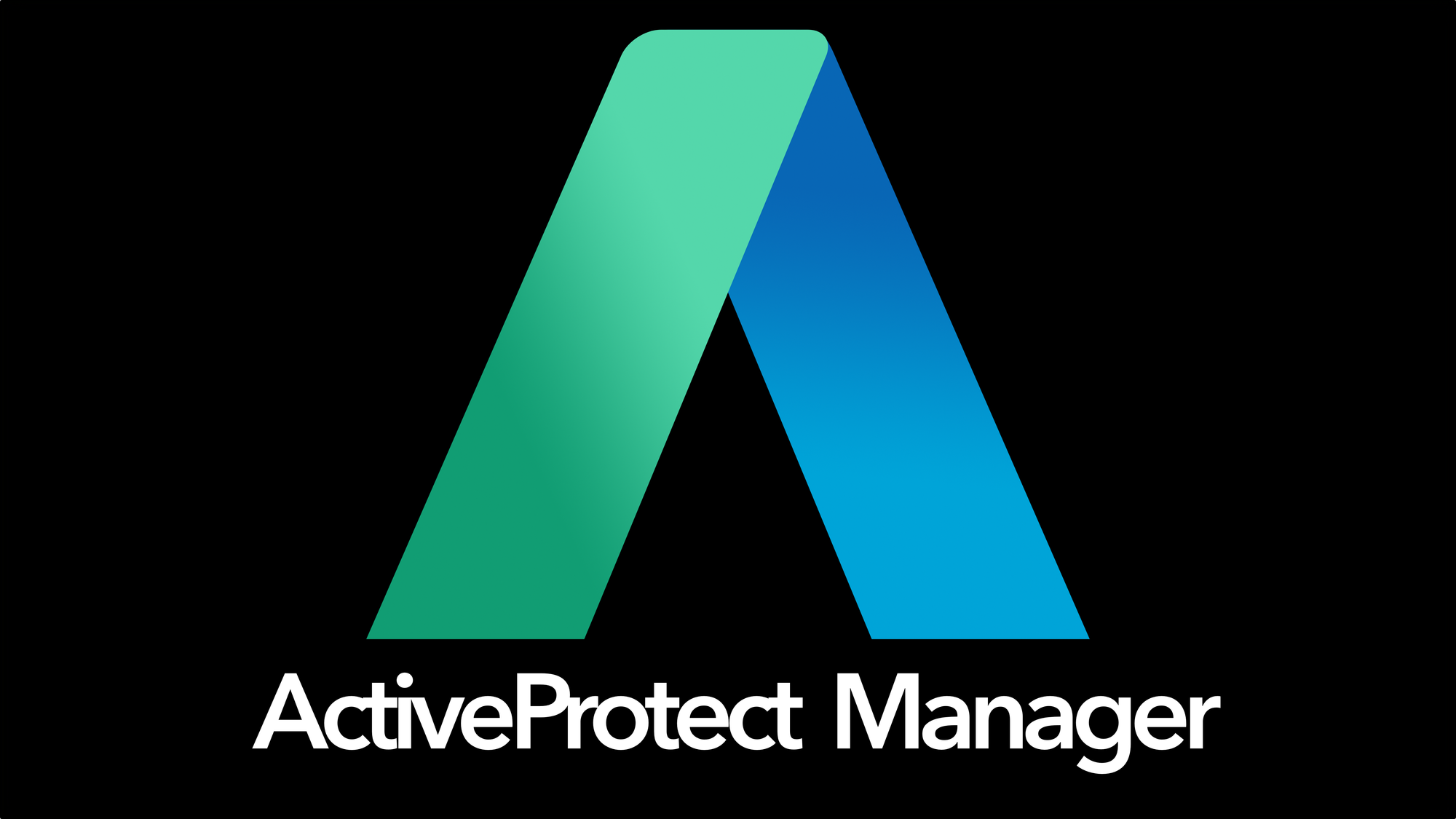
These DP devices will be known as ActiveProtect appliances. Designed for all businesses which streamlines the data protection process for an entire organization, from deployment to recovery, through a unified and intuitive management interface, no matter where the backup tasks occur.
Some of the key highlights of ActiveProtect devices include:
-
Simplified management:
easy procurement, with initial setup completed in 10 minutes, automatic protection mechanism combined with on-demand expansion cluster architecture, truly simplifying management on a single platform -
High Performance:
Reliable software and hardware integration with source-side deduplication technology, saving 99% of duplicate data transmission, significantly improving backup speed, and saving 70% of storage costs -
Reliable recoverability:
Synology's native immutable storage technology, combined with data verification and automatic repair, provides one-stop management of off-site backup copies, ensuring high reliability of data restoration
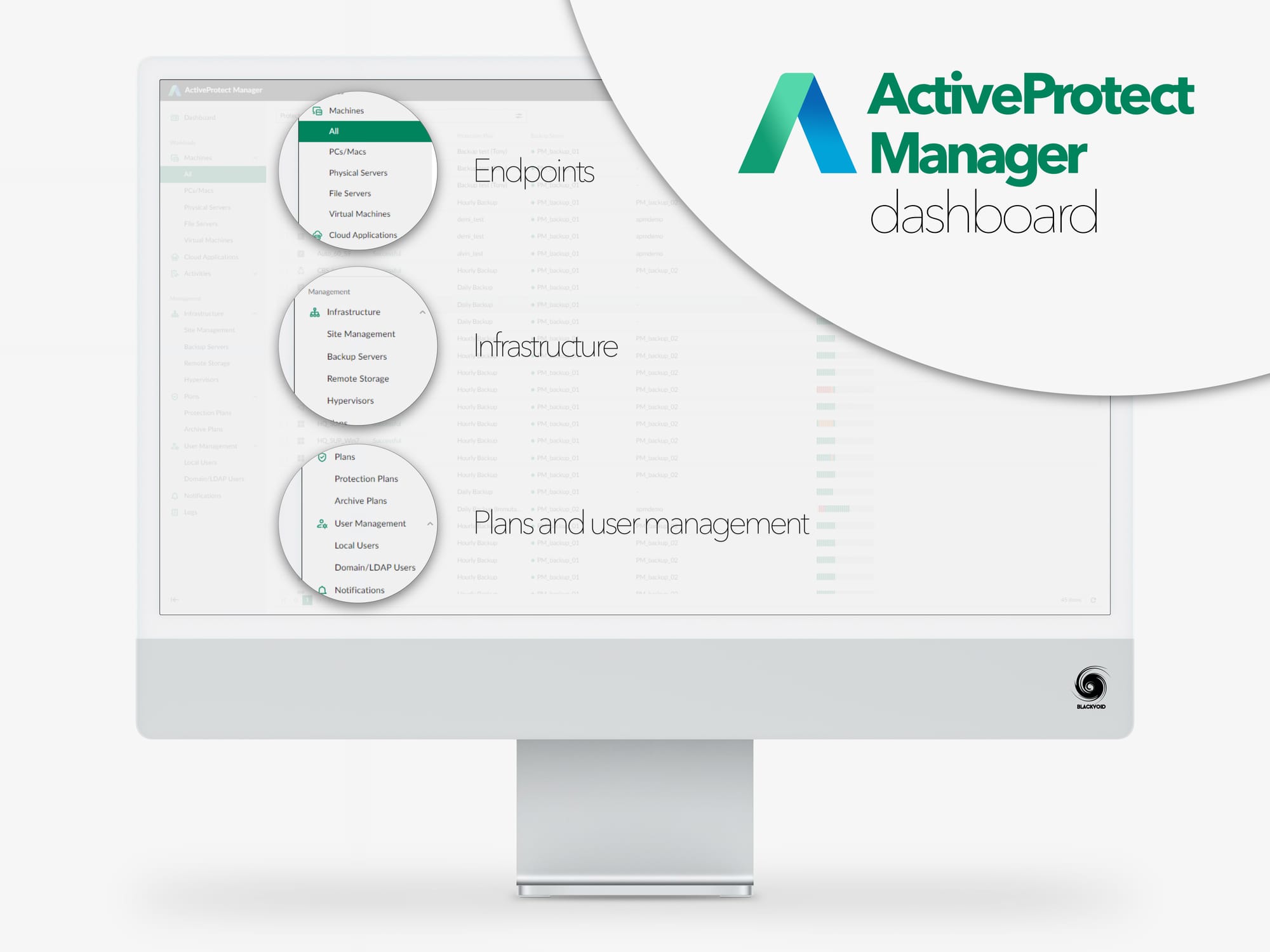
So what is ActiveProtect? If anyone is familiar with Synology's DSM eco-system and more to the point, with their Active Backup apps (Business/M365/Google Workspace), as well as Snapshot Replication and VMM (Virtual Machine Manager), then using ActiveProtect will be very familiar.
View your entire backup infrastructure, including primary backups, backup copies, tiered data
ActiveProtect is a subscription-based single hybrid platform combining multiple DSM packages and their features and functionalities into one. Using a single dashboard, we will be able to configure, protect, monitor, and more, all of the endpoint devices be it local desktop devices, servers, virtual machines, or cloud tenants.
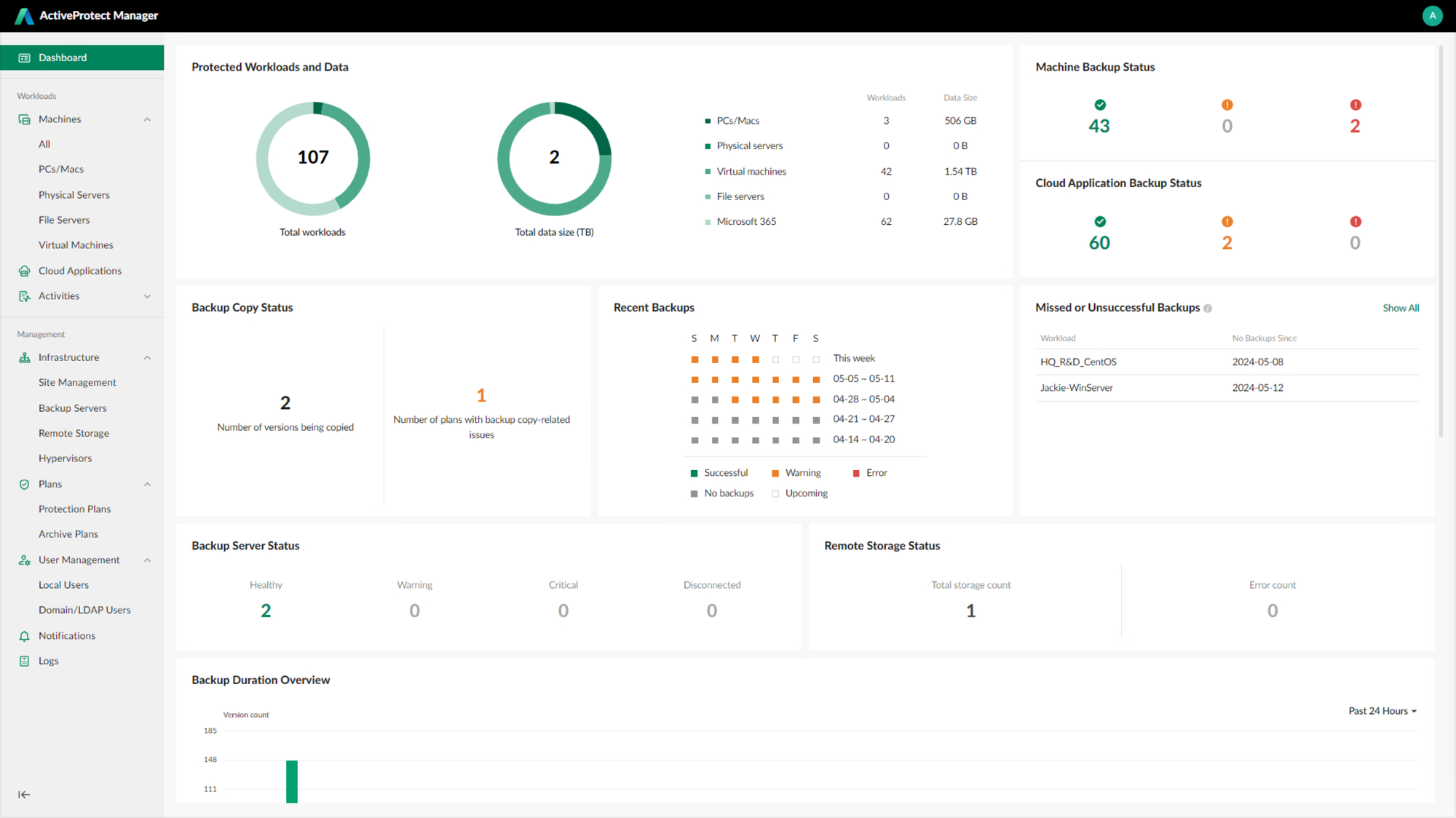
Some of the benefits of this all-in-one backup solution would be:
-
Deploy your server in only 10 minutes
-
Detect and restore corrupt data, verify backups, and test your disaster recovery strategy in a sandboxed environment with built-in VMs
-
Secure your data with native immutability and isolate your data with air-gapped backups
-
Leverage bare-metal or file-level restoration to restore data or perform P2V or V2V restoration to instantly recover data
-
Scale your data with ease to meet changing business requirements
To be able to deliver all of these benefits to a business, Synology needed to make the whole experience as easy as possible and scalable for future deployments as well.
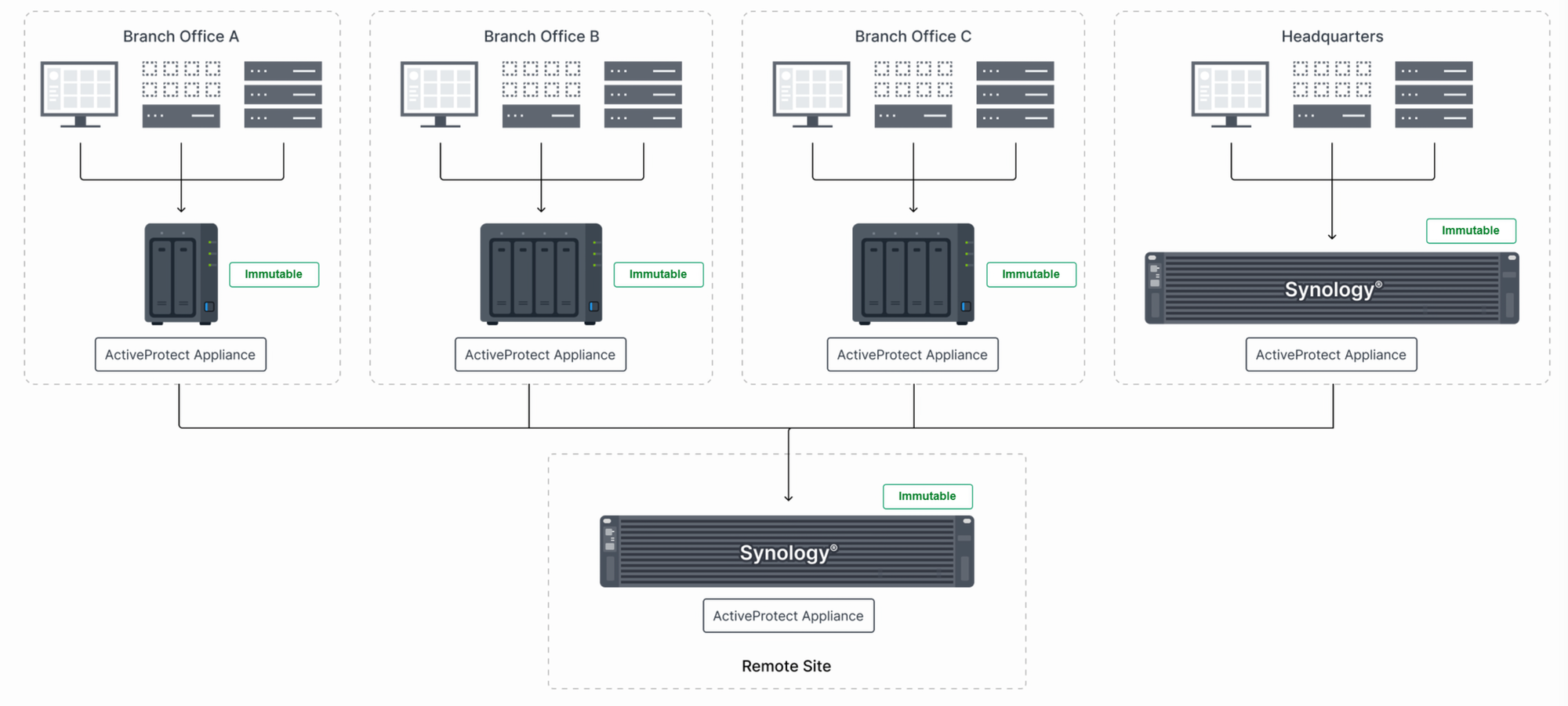
While these appliances are targeted at businesses, for local implementations, they can be used with Synology's C2 cloud platform as its backup destination as well. Of course, a C2 Storage subscription will be needed regardless of the configuration and appliance in question.
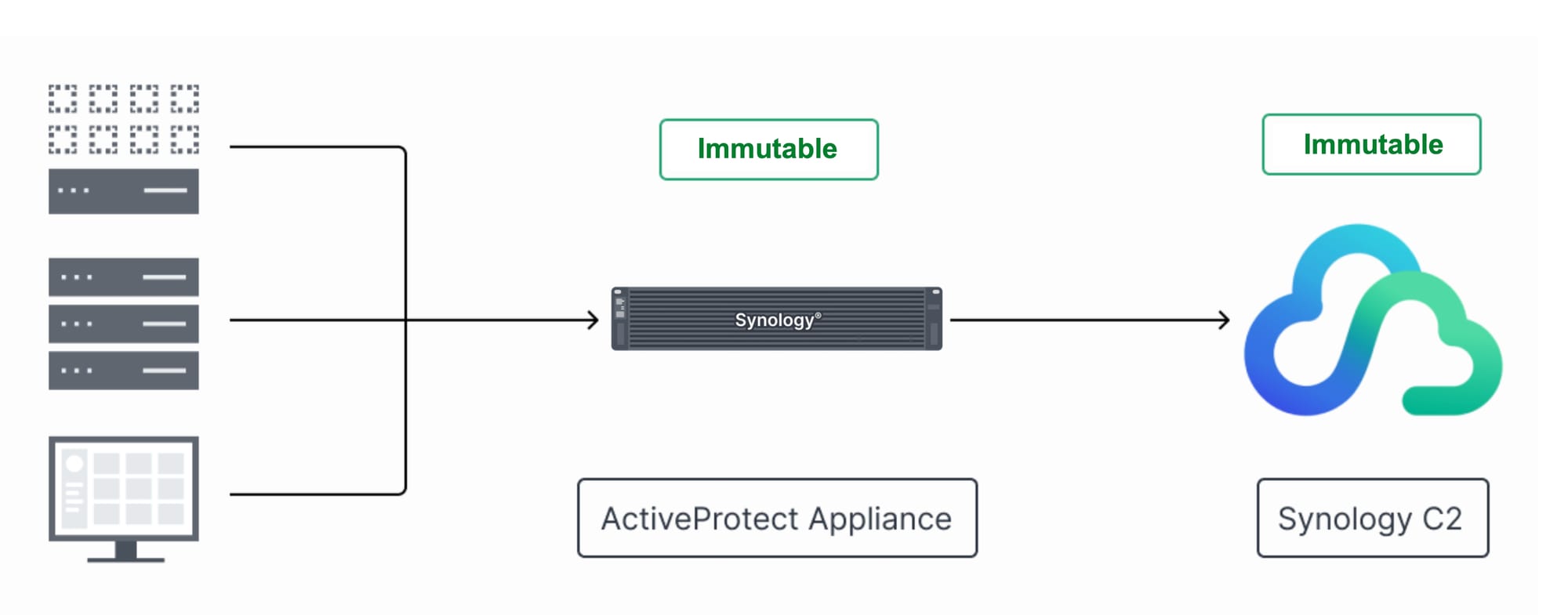
Active Protect will offer data protection of various systems and devices with both local and remote backups (to a distributed node), all configured and monitored through a single dashboard. Having the option to recover a server to a remote or local VM hypervisor, will allow for low RTO periods and quick recovery scenarios with minimum downtime.
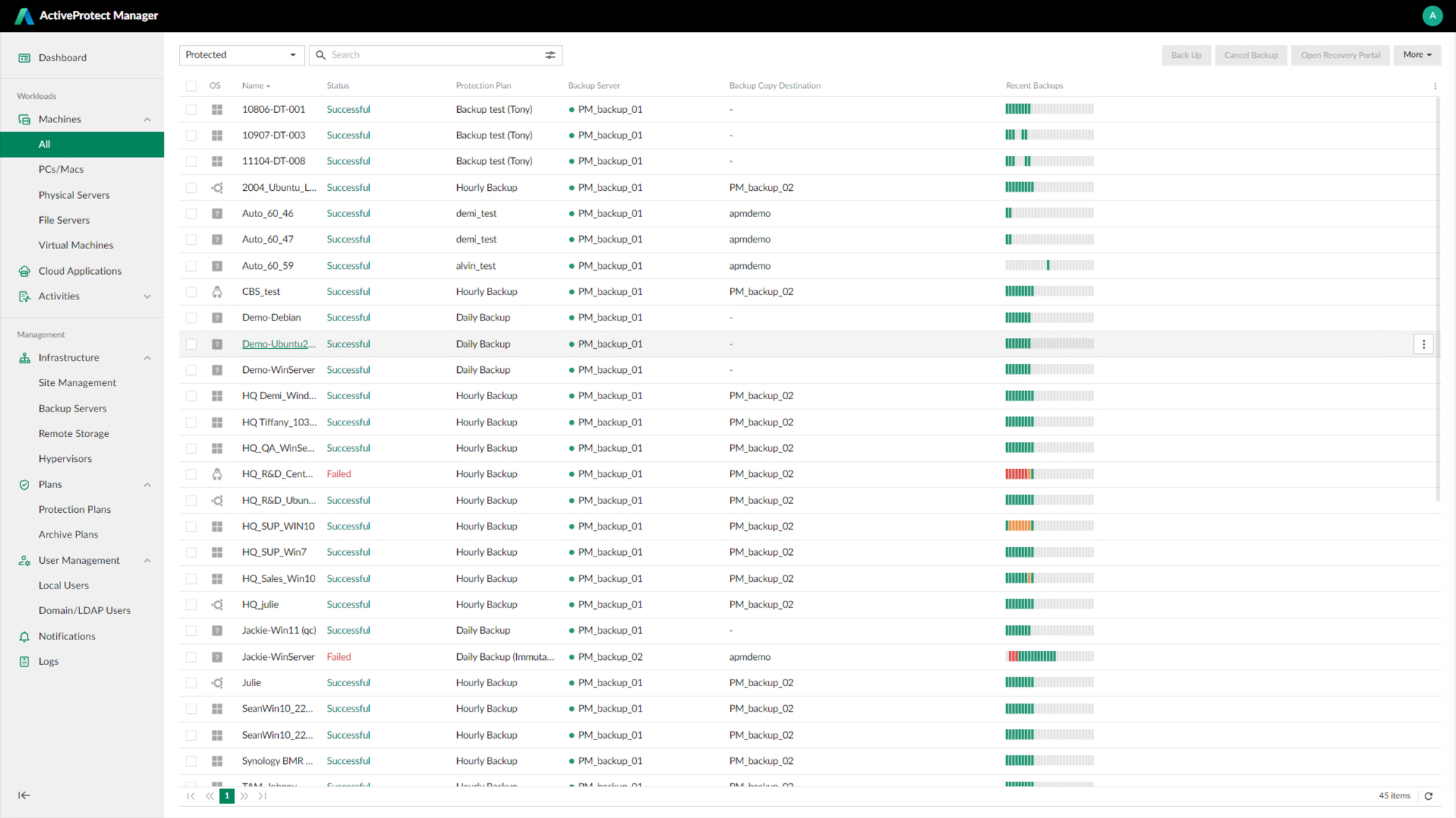
Create custom protection plans to manage and view thousands of workloads on one platform
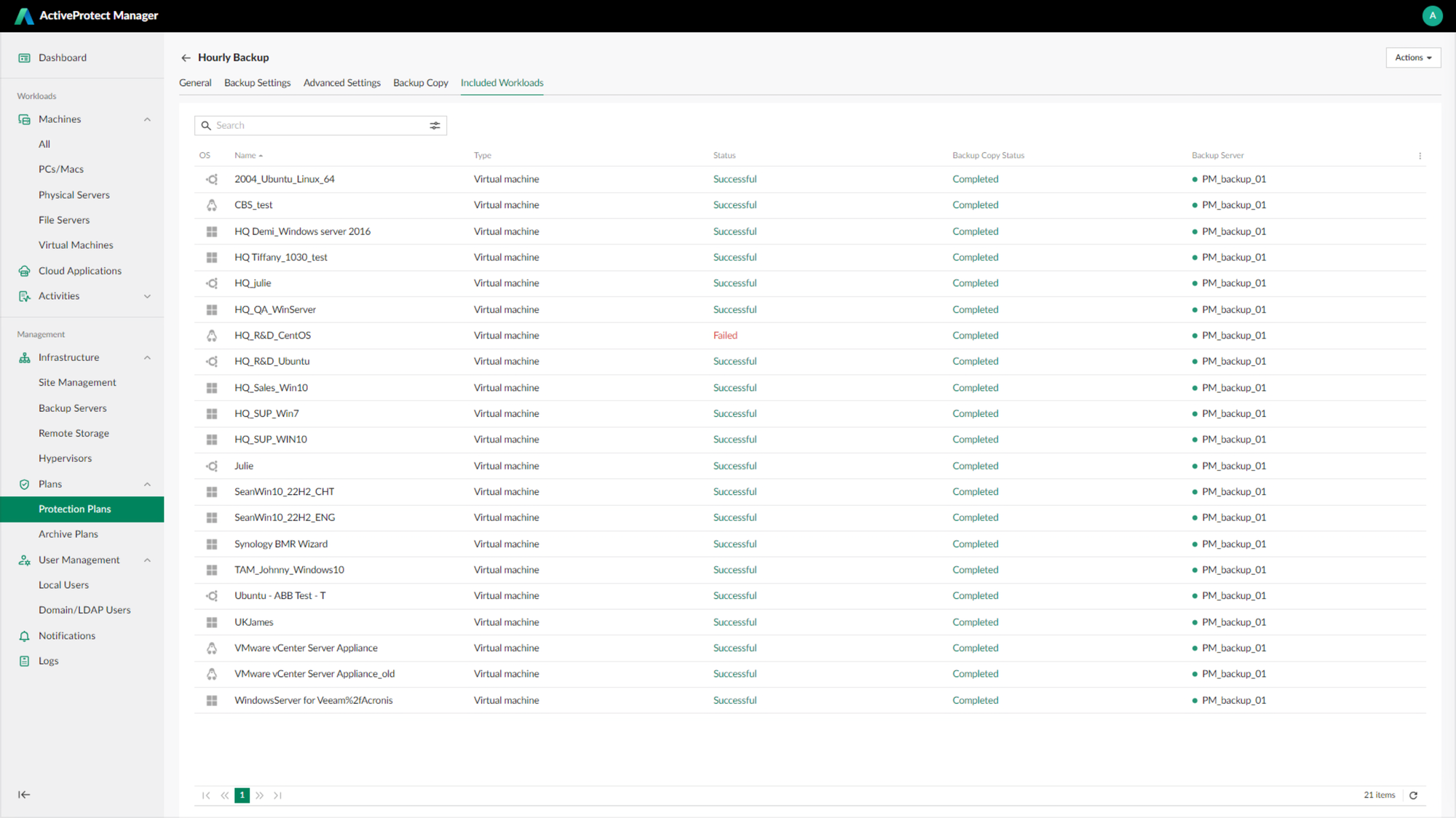
Set up multiple backup servers, with a intuitive interface to scale at any time to meet evolving data needs
Automatically protect new VM and SaaS accounts to your specified protection plan as your data grows
One of the benefits of ActiveProtect as well as the BTRFS file systems under the hood is that we will be able to take advantage of global, source-site, and cross-site deduplication. This means that duplicate data will be eliminated in a cross-platform or cross-device configuration, eliminating unnecessary transmissions, saving storage space, and thus shortening backup times overall.

With the introduction of the W.O.R.M. protection mechanism in DSM 7.2, it is no wonder that ActiveProtect will also benefit from this. APM will support immutable protection plans that can be activated to provide zero change policy to any data configured in such a manner as well as three (3) layers of air-gapped backup options.
Detect and backup only modified data to reduce data transfer and leads to faster backup completion
Deduplicate data at the source and reducing transmission requirements, shortening backup times


Detect and restore corrupt data, verify backups, and test your disaster recovery strategy in a sandboxed environment with built-in VMs
Leverage bare-metal or file-level restoration to restore data or perform P2V or V2V restoration to instantly recover data
Flexible recovery allows for unified control of restoration from off-site repository, even restoring to built-in virtual machines, for restoration testing to ensure data recoverability.
Just as other Active Backup DSM solutions, ActiveProtect will include an APM recovery portal as well. Using it, administrators and users will be able to do file-level restorations for quick data set recovery. On top of this full bare-metal and P2V or V2V restoration will be supported as well. So systems and applications can be fully restored, recovering the most critical elements in a business environment. The instant restore feature will allow for data from physical or virtual machines to be instantly restored to either VMWare or Hyper-V environments as well as onto built-in Virtual Machine Manager.

To conclude, what are the benefits of the DataProtection series and ActiveProtect platform from what has been said so far:
- Built-in all backup functionalities
- Model selection by the size of the source data
- Billing based on usage capacity, with a single fixed price
- Software and hardware integration, initial setup completed in 10 minutes
- Easy maintenance
All in all, looks like Synology is not afraid to capitalize on one of their best selling points in the entire DSM OS, the Active Backup packages. ActiveProtect Manager is the best of all that Active Backup packages offer with the addition of virtual hypervisor support as well. These appliances will offer a fast, robust, tested backup solution to anyone looking for a one-time cost investment.
With its simplicity and ease of use, a prepopulated backup-only appliance by Synology could be a real hit for many in both SOHO and large business sectors.
Be sure to keep an eye out here on Blackvoid for an in-depth review later this year when this lineup of devices will start to ship.
: FAQ
Here are some questions and official answers from Synology on the topic of this brand new ActiveProtect Manager system as well as DataProtect devices:
Will there be an upgrade in the hardware specifications of the DP series? What are the differences in hardware between DP and NAS?
The hardware specifications of the DP series are designed specifically for backup purposes, unlike the NAS design philosophy. The DP series is a dedicated machine tailored for backup applications with optimized sizing. It comes with built-in components required for backup and is complemented by the integration of the APM dedicated backup operating system, aiming for optimal backup and restoration performance. On the other hand, NAS belongs to the realm of all-in-one/DIY usage, catering to mixed applications based on individual scenarios (e.g., Data Management, VM Storage, SVS, etc.)
Why not just install ActiveProtect Manager on a NAS? Why introduce dedicated hardware?
Optimizing the DP series isn't solely dependent on hardware; it also requires the integration of APM's underlying technology logic, specifically the accelerator and dedupe engine.
Why does ActiveProtect DP have to limit the size of the hard drive used?
Because our goal is to pre-configure everything for the user, making the device selection process simpler, users won't need to DIY, and communication will be clearer.
What are the differences in functionality compared to Active Backup, and what are the main features of ActiveProtect?
The design concept of ABS is from five years ago (standalone, data doesn't move, all local), but in recent years, both users and regulations have adjusted their concepts of data protection. Although the trend of moving to the cloud is high, enterprises still require services to run locally. Therefore, it's not necessary to move entirely to the cloud but rather to achieve mobility, scalability, and visibility.
After the launch of ActiveProtect, will the product positioning target a specific market?
We've observed that achieving a 'complete' backup requires too many resources and is overly complicated for enterprises. Therefore, we aim to create the ultimate simplified, efficient, and secure backup appliance through ActiveProtect Appliance, catering to all markets.
After the launch of ActiveProtect, will Active Backup be discontinued (EOL)?
Existing Active Backup for Business users can still extend their usage through APM + DP to fulfill new functionalities at the software level, such as visibility, scalability, long-term retention, and more.
When is the ActiveProtect DP series expected to be launched?
Q4 2024
Why charge by storage and not workload?
The reason for adopting storage-based pricing is simplicity.
Workload or instance-based pricing can be overly complex. In the past, most backup vendors charged by instance. However, in such cases, different instances may have different pricing mechanisms. For example, three PCs may be considered as one instance, but one VM counts as another instance, and if it's a SaaS service, it's priced based on the number of accounts.
Moreover, we use storage-based pricing or the deduplicated figure, which allows for even greater cost savings.
Can you provide a specific scenario where the DP series would be a better fit than NAS + ABB?
DP series outperforms ABB on NAS in all aspects. In terms of security, the DP series supports immutable backup and air-gapped solutions. Regarding management, the DP series utilizes plan-based management, allowing unified management of all workloads, while ABB operates on a per-platform, per-job basis, which is relatively complex.
Why is Synology charging a subscription fee for one backup software, while also selling a separate backup software license-free? What additional benefits do the users get by paying a recurring fee?
If we charge recurring fees, it's essentially a commitment to users that we must continuously maintain and update our products.
In the future, will there be any (adverse) changes to Active Backup Suite features or functionality?
For ABB, we won't have any adverse effects. Existing Active Backup for Business users can still extend their usage through APM + DP to fulfill new functionalities at the software level, such as visibility, scalability, long-term retention, and more.
Additionally, for updates to the ABB platform, we will still update our agent.
Who are the biggest competitors when it comes to the DP Series?
Our main competitors are currently defined as Veeam or other purely software-based backup solutions. This is primarily because we specialize in all-in-one integrated solutions, which, compared to Veeam or other software backup solutions, require DIY and sizing on the user's part. We provide pre-configured and pre-sized solutions, offering an extremely simplified backup experience.
What customer requests or insights motivated Synology to create the DP product line? (Who is asking for this?)
Many existing customers are looking for solutions like ActiveProtect Appliance. They desire a more secure backup, centralized management, and higher efficiency. Additionally, we've been asked in several markets about our previous package-based Active Backup, and some potential customers considered it insufficiently professional, so they excluded us without trying. This is also a significant reason for us to launch a dedicated backup solution because we want the market to see our determination and expertise in the backup field.
According to the price comparisons page, Synology is charging a much lower price than many leading enterprise competitors. What additional benefits are those competitors offering that justify charging 5x or more of Synology's cost? If you are creating a product that can compete against their products, why are you charging so much less?
When it comes to on-premises backup solutions, we currently outperform many tier-1 competitors. Through ABB alone, we've seen many customers switch from solutions like Veeam, Veritas, and Dell to ours.
Furthermore, out of our total of 10 DP series enterprises, 7 are looking to replace competitors like Veritas and Veeam with our DP series.
The reason we're more affordable isn't because we lack competitive advantages, but because we want to convey to the market that we offer a complete backup solution that is still affordable.
Is there a possibility that the DP series becomes available without the subscription or are you entirely set on it already?
Our current pricing mechanism involves licensing fees, which is typical in the backup market. In fact, all solutions in the backup market require payment of licensing fees.
In an instance where someone is on the fence between a DP unit and an RS unit with a wide array of packages available, why should that customer still lean to the DP unit despite the subscription fees and limited packages?
DP series is purpose-built for backup, pre-configured, and pre-sized, offering more robust backup capabilities than Active Backup.
On the other hand, RS comes in various form factors, but the biggest issue currently is that customers are unsure about selecting the most suitable model for their backup needs. Additionally, they need to handle memory or storage upgrades themselves. In contrast, with the DP series, users can simply choose the model based on their backup capacity requirements.
What industries or sectors are you primarily focusing on with DP series & ActiveProtect?
Any organization with a need for backup is our target market. Because whether it's SMBs, SMEs, or large-scale and multinational enterprises, data protection is always crucial. We've observed that achieving a 'complete' backup requires too many resources and is overly complicated for enterprises. Therefore, we aim to create the ultimate simplified, efficient, and secure backup appliance through ActiveProtect Appliance, catering to all markets.
Comment on the retention lock feature?
This approach simplifies the setup and enhances security by eliminating potential human errors during configuration. Some vendors, like Veeam, allow separate settings for retention and immutable periods. This can lead to vulnerabilities if the user sets the period too short, or inefficient use of storage if set too long.
What are the data deduplication ratios?
Basically, it can be said to reduce errors by at least 50%, but the improvement can be even higher depending on the platform or device. Our existing customers have seen improvements as high as 70%.
How can clients monitor their current data usage? Is there a way for them to estimate potential backup storage capacity for the following year? Will they receive alerts before their storage is full?
The storage system already has an event notification mechanism. Currently, our APM allows you to view storage usage and growth trends over the past month, but it does not proactively predict future data volumes.





